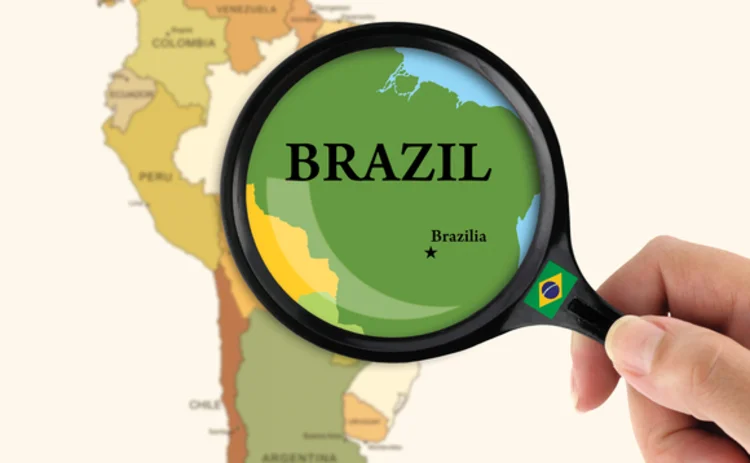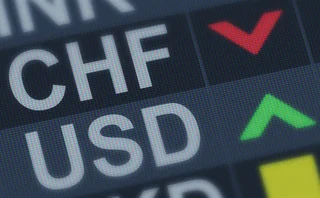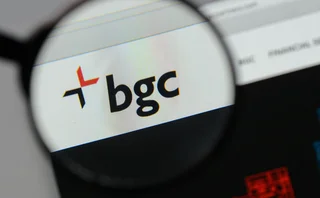
FX market looks to Brazil for LatAm returns

Brazil has proven itself to be a growth economy with a strong currency during a time of global uncertainty in the foreign exchange market, according to industry participants, with both banks and brokers focused on extracting maximum value from the country despite government efforts to reduce the inflow of capital.
Eyebrows were raised in October 2009 when the Brazilian government imposed a 2% tax on financial transactions related to foreign investments in the country's financial and capital markets. The measure, known as the Imposto sobre Operações Financeiras (IOF), was intended to reduce capital inflows, discourage a speculative bubble in the Brazilian capital markets, and stem the appreciation of the Brazilian real, which had soared sharply against the US dollar during 2009.
Contrary to some expectations, the impact of the tax has been minimal and has not affected the market's long-term growth potential, according to George Nunn, head of FX and emerging market sales for North America at BNP Paribas in New York. In fact, Brazil has positioned itself as one of the most dynamic economies in the region, and has been the main driver of growth in Latin America, he says.
"Although there has been a decline of short-term foreign investors putting new money into Brazil's bond market on the back of the IOF tax, longer-term flows, such as those from the foreign direct investments (FDI) of corporations, continue to grow their commitments in the country. I don't see this ending any time soon. There is a great deal of confidence in the Brazilian economy's strength, and this creates strong demand for the real," says Nunn.
While the IOF tax might not have had a major impact on FX flows into Brazil, the real did weaken dramatically during September 2011, with USD/BRL rising from 1.59 to 1.95 in a matter of weeks. The move caught some participants off guard, but the currency now appears to have stabilised, appreciating steadily again during the first two months of 2012.
"The global reaction to the European debt crisis caused a flight to safety. Important amounts of unwinding, coupled with tax policies designed to increase the cost of short-term speculative investments, caused unique behaviour in USD/BRL. However, the investment in Brazil is long term and continues as fundamentals remain positive. As such, we continue our longstanding commitment to Brazil and the Latin American region as a whole," says Jason Forwood, head of Latin America financial interest rates and non-deliverable forwards at interdealer broker GFI Group in New York.
There is a great deal of confidence in the Brazilian economy's strength, and this creates strong demand for the real
Nunn also acknowledges a degree of positive carry in the Brazilian real as a result of risk expectations in Europe in late 2011. "Towards the end of last year, flows from hedge funds and real-money accounts were all focused on hedging out their emerging markets FX exposure. Since the beginning of 2012 there has been a strong ‘risk-on' move by these same clients, along with longer-term FDI flows from corporates, all coming to the market to establish long emerging market positions. This explains why we have seen a more than 8% appreciation in USD/ BRL and USD/MXN since the beginning of the year," he says.
As Brazil continues to attract foreign investment and the real appreciates again, market participants are clearly seeking to maximise on the related opportunities as much as possible. Central settlement utility CLS is in negotiations to add the real to the currencies it covers, while interdealer broker Icap has set the growth of the EBS platform in Brazil as one of its priorities for 2012.
"Two to three years ago, we made a decision to accelerate the electronic business in Latin America. This was a regional strategy including countries such as Colombia, Peru and Chile, but Brazil remains the largest opportunity for us," says Edward Brown, executive vice-president of business development and research at Icap in New York.
EBS has been active in Brazil for five years and has worked with the Central Bank of Brazil to develop the country's spot market. Challenges still remain, according to Brown, in particular the fact that the real remains a non-convertible currency.
"This is a significant challenge and as a result, the volume that flows through the spot market in terms of outright business is pretty nominal, which makes it difficult for domestic participants. There is general consensus with a fully convertible currency that you have to have a mature and robust spot market to allow for various currency or transaction flows," Brown says.
Only users who have a paid subscription or are part of a corporate subscription are able to print or copy content.
To access these options, along with all other subscription benefits, please contact customer services - www.fx-markets.com/static/contact-us, or view our subscription options here: https://subscriptions.fx-markets.com/subscribe
You are currently unable to print this content. Please contact customer services - www.fx-markets.com/static/contact-us to find out more.
You are currently unable to copy this content. Please contact info@fx-markets.com to find out more.
Copyright Infopro Digital Limited. All rights reserved.
You may share this content using our article tools. Printing this content is for the sole use of the Authorised User (named subscriber), as outlined in our terms and conditions - https://www.infopro-insight.com/terms-conditions/insight-subscriptions/
If you would like to purchase additional rights please email info@fx-markets.com
Copyright Infopro Digital Limited. All rights reserved.
You may share this content using our article tools. Copying this content is for the sole use of the Authorised User (named subscriber), as outlined in our terms and conditions - https://www.infopro-insight.com/terms-conditions/insight-subscriptions/
If you would like to purchase additional rights please email info@fx-markets.com
More on Trading
FX books bulge in quant investment field
Carry strategies attract bulk of interest; banks eye growth in volatility, intraday and emerging market replication
Are market-makers better at dealing with central bank intervention?
Lack of pain following BoJ intervention suggests dealers are better at handling event risk
Europe’s FXPBs take advantage of margin rule carve-out
Some large FX options users have switched to dealers capitalising on regulatory mismatch
FXSpotStream looks to growth products beyond spot
New chief exec Jeff Ward highlights NDFs and FX swaps as next boom area for the venue
Hedge funds’ pricing often trumps other buy-siders – SNB
Research shows “advantageous” prices result in outperformance of 139bp trading USD/CHF
Emerging market liquidity faces capital charge crossroads
Hedge funds and market-makers need a more capital-efficient way to trade EM currencies, argues SGX exec
Banks and market-makers back BGC’s FMX
Group including BofA, Citi and Goldman buy 26% stake in spot FX, UST and futures trading business
BestX founder Jerome joins Deutsche Bank
Oliver Jerome joins the German bank as head of European FX product
Most read
- Are market-makers better at dealing with central bank intervention?
- Asia FX Awards 2024: The winners
- Banks face tough choices over single-dealer platforms







